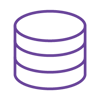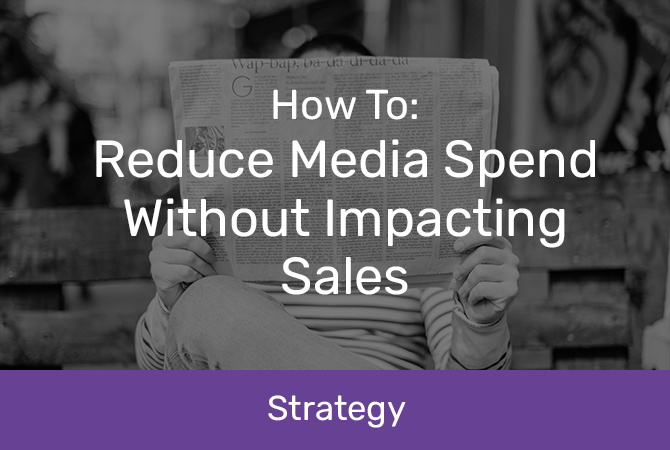
How To: Reduce Your Media Spend Without Impacting Sales
Data can help maximise the value of your marketing
Strap in – all signs point to 2023 being a bumpy ride.
For businesses – especially those in FMCG and retail – that means the pressure is on to make more efficient use of spend as budgets fall and margins shrink. The good news? There’s plenty of room for improvement.
There’s no time to lose, either. The World Bank is projecting global growth slowing at a rate only beaten by the 2009 and 2020 recessions. Will things get that bad again? Maybe – any other challenge to the world economy will probably see it pushed into a recession.
How do you stay afloat when the economy is floundering? Data, as always, is there to help you cut waste, maximise a minimal budget, and keep sales flowing.
 Deeper insights, improved targeting & long-term loyalty
Deeper insights, improved targeting & long-term loyalty
Modern, sophisticated data analytics doesn’t just help you understand consumer behaviour – it offers actionable insights and growth opportunities. By looking closely at consumer experiences, their reactions to messaging and sales drivers, you can work out how to improve campaign effectiveness and boost loyalty in the long term.
FMCG organisations, in particular, must be closely attuned to changing consumer preferences, so they can continually adjust campaign messaging and boost effectiveness. Data is the easiest way to gather those crucial insights and deepen your understanding of your audience.
Gather data around demographics, interests, browsing behaviour and purchase history using web analytics, social media, consumer surveys and CRM data. The more you can pull together, the better.
With Data in hand, you can:
Focus on Valuable Customers
Segmentation is the bread-and-butter of audience targeting, and analytics helps you make it even more effective. Using analytics tools, you can segment your audience into distinct groups based on characteristics and behaviours. That information lets you identify the most valuable segments most likely to deliver a strong return. If your ad budget is dropping, focusing on those segments is the best use of your spend.
Personalise with Precision
With segmentation data, you can be ultra-specific with your campaign content. Instead of a broad-brush approach, which will inevitably miss the mark with some audience members, create a campaign based on the demographics and behaviour of each segment. The more personalised the content, the more likely it is to have an impact and lead to a sale. Personalisation also decreases ad fatigue – people tend to tune out content that isn't relevant while relevant messaging catches their attention.
One example almost everyone has experienced: retargeting, where a product that the consumer has searched for continues to pop up as they browse the web. This approach is simple, but the stats show that retargeted consumers are three times more likely to click on your ad than those who are seeing it for the first time.
As always, it’s about reaching the right person at the right time with the right message.
Boost Conversions
Conversions are the aim of the game, and data can help you build your understanding of why and how they happen. The more you know about consumer actions that lead to conversions – for example, adding items to a cart or viewing a specific item several times – the easier it is to focus on those actions and push conversions up. For example, you can send a follow-up email to consumers who leave items in their cart or retarget ads to those who have viewed an item several times. You're using your limited ad spend wisely by focusing on those most likely to buy.
 data-driven budget allocation
data-driven budget allocation
Data doesn't just help you understand your audience – it also gives you valuable insights into the effectiveness of your media spend. Analyse spending against results to measure the ROI of your media costs across various channels and find out how to better allocate your budget.
Here's how ROI analysis can help:
Hone in on Valuable Channels
Social media, Google ads, email marketing, targeted online advertising and even traditional channels like radio and television may have a role to play in your marketing work. The key is to understand which channels deliver the most value. Analytics helps you measure how much you spend on each channel and the proportion of conversions it drives. For example, you might spend a significant portion of your ad budget on paid social media posts but find they are responsible for very few conversions. As a result, you could decrease your focus in that area and concentrate on other, more effective approaches.
Of course, it’s not quite that simple – some channels may not lead directly to a conversion but play a key role in the consumer journey. Those social posts could help expose your brand to potential consumers and boost brand recognition, leading them to your website or in-person store. It's crucial to look at a consumer's entire pathway to understand the drivers behind each sale.
Social media without the spend
While paid social media can be expensive, that doesn’t mean you must abandon social altogether. Social channels – mainly the ‘big three’ of Facebook, Instagram and YouTube – can be powerful conversion drivers without needing paid ads. Facebook and Instagram are consumer-centric and relatively easy to leverage, with access to a vast audience of potential customers. If your budget for paid advertising is slipping, focus on unpaid content instead – keeping lines of communication open with your existing consumer base and giving potential customers a chance to find you.
Identify offline opportunities
Believe it or not, some people spend little time online. Key partnerships with local businesses or charities can be an effective way to get your name out in front of these audience segments and strengthen the value of your brand. Look for companies or organisations connected to what you do – for example, if you're a sporting goods brand, you could sponsor local races or children's events. If you sell a unique food product, talk to businesses that sell gift hampers to get your product included. It's about diversifying your approach, so you’re not relying on a limited number of online channels.
Focus on high-impact ad placements
Not all ad placements are created equal. Many go unseen thanks to ad-blocking software or displayed 'below the fold', where they go unnoticed by many users. High-quality analytics can help you identify and avoid these low-visibility placements to ensure you use your budget more effectively.
Weed out the time-wasters
Unfortunately, bots, ad stacking and domain spoofing are increasing in frequency. These online nogoodniks can make it hard to measure the true impact of a campaign, inflating viewing metrics and giving you a false idea of performance across channels. All of which can lead to wasted spending on ineffective channels or misdirected messaging. There are ways to identify and weed out spam and bot accounts – it just takes a bit of help from the experts.
 Pricing, profitability & retention
Pricing, profitability & retention
While pricing and discounting might seem unrelated to your marketing spend, they’re all part of the same push toward maximising profitability and minimising the cost of customer acquisition. In a world struggling with inflation, pricing and promotions can naturally affect retention. Consumers are looking for great value and will only go elsewhere if you can provide it.
Here’s how pricing analytics can contribute to your overall marketing effectiveness:
Optimise pricing and promotions
In the fast-moving, cutthroat FMCG industry, pricing analytics is a crucial tool for your marketing and sales teams. Factors influencing pricing include competitor pricing, market demand, quality, perception and your target market. With so much happening in the pricing space, people need precise data to make pricing decisions.
With advanced analytics, your team can set the 'right' price for your product across the lifecycle –including discounts and outlet sales at the end of a season, as well as early-adopter pricing and changes in response to competitor sales. This wide-angle view of pricing also feeds into your marketing, helping target audience segments at different times, and ensuring that messaging around product pricing matches your current price strategy. For example, a fashion brand may target ‘fashion forward’ audience segments at the beginning of a pricing cycle, when products have just launched and prices are high. Later in the cycle, marketing efforts would target the price-driven consumers – those less concerned about being at the cutting edge of trends and more focused on getting a great deal.
Data from Deloitte shows that this ‘right’ pricing strategy helps immediately drive sales growth of 1%-2%, so retailers stay one step ahead in a competitive marketplace.
Discounting done well
Discounts can seem like a fail-safe marketing strategy, but they could be more complex. Some promotions and discounts will resonate with some consumers, while others may be left cold. As we have seen above, some prefer to pay full price at the beginning of a product life cycle and see discounted products as less valuable. Research shows that discounts don't necessarily generate new sales but concentrate consumer purchasing on sales and promotions instead of spreading it throughout the year. Too many deals or promotions can harm your brand identity, making your product look less valuable to the consumer.
Naturally, analytics can be helpful here as well. By looking at past promotions and their ROI, you can learn what works for specific customer segments and what lands with a thud. With that information, you can optimise your discounting to maximise its effect and minimise the impact of discounting on your brand equity. The key is focusing your discounts – and your marketing efforts – on promotions that are proven to drive sales.
Keep consumers coming back
In FMCG, customer retention – or lack of it – can make or break your business. With prices skyrocketing and consumers struggling with increasing expenses, the market is even more competitive now. Consumers are happy to shop around, and brand loyalty can be hard to find. With ad budgets slumping, retention is vital – it’s generally much more expensive to attract and onboard a new consumer than it is to keep an existing one.
Analytics can be a powerful retention tool, helping identify loyal consumers and loyalty-boosting strategies. Work out what drives consumers to return – are they in a particular segment? Do they come to your business through a specific channel? Do they have shared experiences with your product? If you can identify these commonalities, you can develop strategies to improve retention and turn regular consumers into big fans.
Again, this is where segmenting and targeting come in – with different groups driven by specific loyalty strategies, which means varied messaging. For example, some segments are driven by discounts and respond well to a loyalty scheme. Others may be more interested in personalised services and offers. It's about using data to determine what works for each audience segment.
 reduce spend, not sales - three strategies to start you off
reduce spend, not sales - three strategies to start you off
There’s no single strategy that will help you reduce your ad spend and increase sales at the same time. As with anything in marketing, it’s a continual cycle of testing, analytics, tweaking and relaunching. The good news is, even if one strategy fails to make an impact, sophisticated analytics and marketing automation mean there’s always room to adjust, adapt and improve.
Where to start? Here are our top media spend tips:
Give SMS a try
There’s no question that people love their phones – why not reach out that way? Research shows that consumers in the US check their phones an incredible 52 times a day. Also, text messages have an open rate of 98%, compared to just 25% for email.
If you're not regularly using SMS marketing in your retail business, it's worth a look. Start collecting consumers' mobile numbers and get permission to send SMS messages when they sign up for your email list. Then, you can send relevant messaging around promotions or sales targeted to what you know about specific consumer groups.
Kiwi streetwear retailer Federation + has seen excellent results with SMS. The brand uses SMS messaging to offer a 20% limited-time discount during an end-of-year sale, with solid results. In 2020, the promotion saw an 8% click rate and an 11% conversion rate.
Don’t forget email marketing
Email marketing may seem old hat these days, but it’s still the most effective marketing channel by a wide margin – with a return of around $36 for every $1 spent. You probably already have an email database, so take time to personalise messaging, segment and target, and find ways to get new consumers onto your email list.
Leverage video content
Video is the medium of the moment, with a global average of 84 minutes of video consumption per day. That’s a lot of potential eyeballs on your product. Video can be a fantastic way to showcase your product and give consumers an in-store experience – without needing to leave the house.
Of course, content needs to be high quality and targeted at your consumer segments to be effective.
 It all starts with good-quality data
It all starts with good-quality data
Optimising your media spend comes down to data, not just any data. It needs to be accurate, timely and accessible to be helpful and to avoid screeds of information irrelevant to your offering.
An effective analytics system should draw data from your CRM and POS systems, website tracking, customer loyalty scheme, email marketing system, and foot traffic. You should also be able to dig into historical data to analyse sales trends and patterns over time.
Practical analytics tools are crucial – you must ‘play’ with your data and get actionable insights, not overly complex reports. The best analytics systems will have daily dashboards that let you see key KPIs and metrics, give you a digestible look at performance and help inform day-to-day decision-making.
Businesses that don’t have access to this level of analytics are missing out – they’re flying blind, making decisions based on gut instinct rather than data, and probably losing any number of potential sales opportunities. In the ultra-competitive, high-speed world of FMCG, ignoring the data isn’t an option.
make that tight budget work for your business
Marketing budgets are getting smaller. To keep sales moving even in a recession, you must focus on consumer segments, especially those already valued customers. Target your audience segments with personalised campaigns to keep them coming back.
Find out through data analysis which of your campaigns are most effective and on what channels. Look for free social media opportunities and remember offline consumers and like-minded businesses. Place paid ads with care and get help to weed out spam accounts.
Look carefully at your pricing journey, from product launch to remainder sales. Promote your new product to a ‘fashion forward’ audience, then redirect later to attract consumers looking for a bargain. Use analytics to identify those segments and what they want.
Try new channels for promotion – SMS, email and video can all resonate with specific audience segments. And all the above comes down to data – the correct information effectively analysed can keep your marketing spend low and boost sales.
Want to see where to save on media spend without sacrificing sales? Talk to the experts at Datamine today.















































